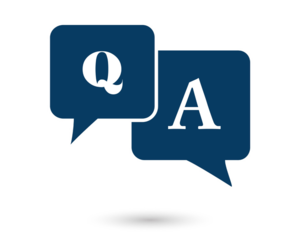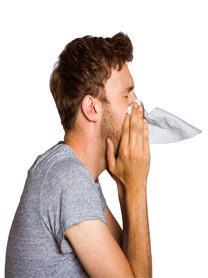“What are the pressure points for a headache?”
I have a bad headache. What are the pressure points for a headache?
16 Answers
AcupunctureAcupuncturist
There are a few “famous” pressure points for headache. One of them is in the “web” between the index and thumb. But it’s way better to have a real acupuncture treatment. Why don’t you set an appointment?
too numerous to mention here. There are several important meridians in the head that are effective to treat for headaches, often based on where the headache is felt.
That would vary on the individual. Acupuncture treats every person's dis-ease in the way the induvial needs. My headache and your headache may be different so the points would be different. You can read more here. Absolutely there is a benefit with acupuncture. https://east2westmedicine.com/what-we-treat/headaches/
If you suffer from headaches, you are not alone. Over 50 million of us experience some form of a severe headache at some point in our lives. Whether you experience minor head pain or severe migraines, headaches can take valuable time out of your day and your life, and leave you searching for relief.
One way to seek relief is by reaching for drugs and other medications. This is fine for the short run, and can help you get out of pain fast. Unfortunately, common headache medications do not address the root cause(s), and when used over long periods of time can cause unwanted side effects.
Acupuncture and Traditional Chinese Medicine (TCM) offer a safe and effective approach to relieving headache pain, without causing harmful side effects, and incorporate a comprehensive diagnostic protocol that can help your acupuncturist understand and address the root cause(s)
of your headaches.
Understanding headache types.
There are many factors in TCM theory that may play a key role in the root cause(s) of a headache.
These include body constitution, emotional health, excessive work,
social and exercise activities, improper diet, physical trauma and hormones. Headaches can also be diagnosed according to specific symptoms, times of occurrence, location on the body, type of pain, triggers and remedies which provide relief.
A natural path to relief.
Acupuncture and TCM takes a holistic, or whole-body approach to health. Your practitioner will take a detailed health history, and perform a physical exam to determine how and why your body’s vital energy, or Qi, is out of balance and identify what type of headache you are experiencing. He/she will also attempt to determine what root cause(s) are contributing to the overall problem. By identifying and treating the underlying cause(s), not just the symptoms, he/she can apply the most effective care.
What do you mean my Qi is out of balance?
An important part of acupuncture and TCM is the concept of Qi. Qi (pronounced “chee”)
is the vital energy that animates the body and protects it from illness.
It flows through pathways called meridians, and provides nourishment
to all the body’s organs. When there is an imbalance or blockage in the flow of Qi, physical symptoms may result. Qi stagnation may be the cause of your headaches.
During treatment, in order to restore the balance and flow of Qi, fine sterile needles will be inserted at specific points along the meridian pathways. Based on your unique symptoms, your acupuncturist will choose to concentrate on acupuncture points related to specific organs. Afterwards, a variety of self-care techniques may be prescribed to
further expedite your healing process.
It is important to remember that acupuncture is not a “quick fix.” Changes may occur quickly or over a longer period of time, depending upon your overall constitution and health. It is also important to closely follow care recommendations suggested by your acupuncturist. Whether it is one visit to address an acute problem, or several visits to address a chronic problem, your acupuncturist will create a treatment protocol
that will maximize your healing potential.
Below are a few ways that you can participate in your own healing, by making simple lifestyle changes that may help soothe—or even prevent—head pain.
Track those triggers: Try to keep track of when your headaches start. Migraine sufferers may find it especially helpful to keep a diary of symptoms and possible causes. Triggers might include anything from eating chocolate, to anxiety or inhaling specific smells. Pinpointing these triggers—and avoiding them when possible—could help.
Stress relief: Stress puts a lot of strain on the body, and can contribute to many types of health concerns, including headaches. Talk to your practitioner about healthy ways to
handle stress, such as meditation or breathing techniques.
Exercise: Physical activity is an important part of any healthy lifestyle, and is a great antidote to stress. Your acupuncturist can recommend types of exercises that may work best for you.
Healthy habits: Making minor changes can make a big difference in your overall health and vitality. Do your best to eat healthy, organic foods, and make sure to get enough sleep every day.
Naturally, acupuncture care is extremely effective in reducing the frequency and severity of many types of painful conditions, including headache pain. By working with your acupuncturist and adopting some simple lifestyle changes, you will be on your way toward a healthier, happier, pain-free life.
If you suffer from headaches, you are not alone. Over 50 million of us experience some form of a severe headache at some point in our lives. Whether you experience minor head pain or severe migraines, headaches can take valuable time out of your day and your life, and leave you searching for relief.
One way to seek relief is by reaching for drugs and other medications. This is fine for the short run, and can help you get out of pain fast. Unfortunately, common headache medications do not address the root cause(s), and when used over long periods of time can cause unwanted side effects.
Acupuncture and Traditional Chinese Medicine (TCM) offer a safe and effective approach to relieving headache pain, without causing harmful side effects, and incorporate a comprehensive diagnostic protocol that can help your acupuncturist understand and address the root cause(s)
of your headaches.
Understanding headache types.
There are many factors in TCM theory that may play a key role in the root cause(s) of a headache.
These include body constitution, emotional health, excessive work,
social and exercise activities, improper diet, physical trauma and hormones. Headaches can also be diagnosed according to specific symptoms, times of occurrence, location on the body, type of pain, triggers and remedies which provide relief.
A natural path to relief.
Acupuncture and TCM takes a holistic, or whole-body approach to health. Your practitioner will take a detailed health history, and perform a physical exam to determine how and why your body’s vital energy, or Qi, is out of balance and identify what type of headache you are experiencing. He/she will also attempt to determine what root cause(s) are contributing to the overall problem. By identifying and treating the underlying cause(s), not just the symptoms, he/she can apply the most effective care.
What do you mean my Qi is out of balance?
An important part of acupuncture and TCM is the concept of Qi. Qi (pronounced “chee”)
is the vital energy that animates the body and protects it from illness.
It flows through pathways called meridians, and provides nourishment
to all the body’s organs. When there is an imbalance or blockage in the flow of Qi, physical symptoms may result. Qi stagnation may be the cause of your headaches.
During treatment, in order to restore the balance and flow of Qi, fine sterile needles will be inserted at specific points along the meridian pathways. Based on your unique symptoms, your acupuncturist will choose to concentrate on acupuncture points related to specific organs. Afterwards, a variety of self-care techniques may be prescribed to
further expedite your healing process.
It is important to remember that acupuncture is not a “quick fix.” Changes may occur quickly or over a longer period of time, depending upon your overall constitution and health. It is also important to closely follow care recommendations suggested by your acupuncturist. Whether it is one visit to address an acute problem, or several visits to address a chronic problem, your acupuncturist will create a treatment protocol
that will maximize your healing potential.
Below are a few ways that you can participate in your own healing, by making simple lifestyle changes that may help soothe—or even prevent—head pain.
Track those triggers: Try to keep track of when your headaches start. Migraine sufferers may find it especially helpful to keep a diary of symptoms and possible causes. Triggers might include anything from eating chocolate, to anxiety or inhaling specific smells. Pinpointing these triggers—and avoiding them when possible—could help.
Stress relief: Stress puts a lot of strain on the body, and can contribute to many types of health concerns, including headaches. Talk to your practitioner about healthy ways to
handle stress, such as meditation or breathing techniques.
Exercise: Physical activity is an important part of any healthy lifestyle, and is a great antidote to stress. Your acupuncturist can recommend types of exercises that may work best for you.
Healthy habits: Making minor changes can make a big difference in your overall health and vitality. Do your best to eat healthy, organic foods, and make sure to get enough sleep every day.
Naturally, acupuncture care is extremely effective in reducing the frequency and severity of many types of painful conditions, including headache pain. By working with your acupuncturist and adopting some simple lifestyle changes, you will be on your way toward a healthier, happier, pain-free life.
Different headaches depend on the location Yangming Headache, Shaoyang headache, or Taiyang headache. The causation of HA is various too.
Maybe you may press LI4 in general or the tip of the middle finger which corresponds to your head.
Maybe you may press LI4 in general or the tip of the middle finger which corresponds to your head.
At the point where the thumb and index finger join together. Sent from my T-Mobile 5G Device Get Outlook for Android<https://aka.ms/AAb9ysg>
One of the best pressure points for headaches is called HeGu (LI 4). It is the 4th point on the Large Intestine channel located between your thumb & index finger at the mound of the webbing when you squeeze them together. Otherwise, better points will be determined by what kind of headache youre feeling & what it may be due to. If it is the absolute worst headache in your life or symptoms progress to vomiting/dizziness you should seek emergency services. Check with your primary or neurologist to see if alternative medicine would be beneficial for your situation.
Headaches can be caused by various issues. Migraines can be well managed by the gallbladder channel, tension headaches by the urinary bladder channel, vertex headaches by the liver channel and so on. Some common combinations for general headches would be: hegu, tai chong, shuai gu, tian zhu, and bai hui. Sincerely, D. Glenn Salazar Werry, L.Ac The information contained in this transmission may contain privileged and confidential information, including patient information protected by federal and state privacy laws. It is intended only for the use of the person(s) named above. If you are not the intended recipient, you are hereby notified that any review, dissemination, distribution, or duplication of this communication is strictly prohibited. If you are not the intended recipient, please contact the sender by reply email and destroy all copies of the original message.
Bad headaches can be taken care of as long as you schedule a visit. Some points can help but there is nothing like a professional visit.
I suggest you see a good acupuncturist who can treat you with acupuncture, herbs and sometimes massage for your bad headaches.
The main point to press for headache is on the hand in the fleshy area between the thumb and index finger. Press the sore spot closer to the first finger bone on the hand. You might also try pressing the top of the foot between the big toe and second toe (again, find the sore spot!).
This isn't how acupuncture or Chinese medicine works. There is no one point or set of points for the treatment of any issue. Treatments are individualized and based on your specific case - i.e. why are *you* experiencing *this* headache/head pain.
Without seeing and diagnosing you, it's difficult to impossible to give you any point or points that might be useful in your situation.
If you'd like to try acupuncture or Chinese medicine, and for pain conditions this is an excellent choice, I suggest seeing a board certified, state licensed acupuncturist. You can go to NCCAOM.org and use their 'Find a Practitioner' lookup to find providers near you.
Without seeing and diagnosing you, it's difficult to impossible to give you any point or points that might be useful in your situation.
If you'd like to try acupuncture or Chinese medicine, and for pain conditions this is an excellent choice, I suggest seeing a board certified, state licensed acupuncturist. You can go to NCCAOM.org and use their 'Find a Practitioner' lookup to find providers near you.






